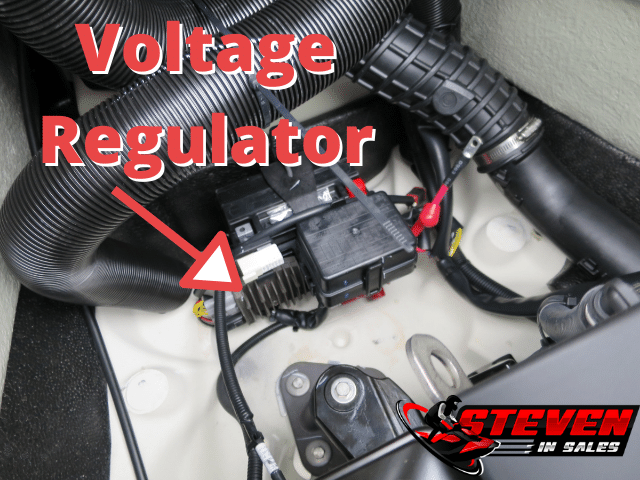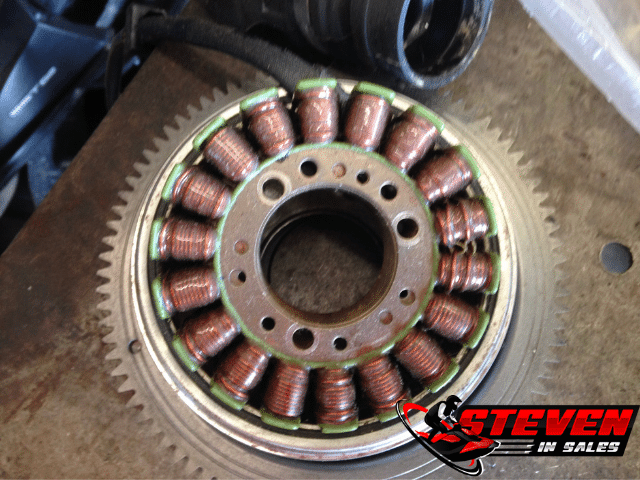A jet ski engine has many similarities to your car and truck engines, but they vary on many things.
One thing that is different with jet skis in comparison to cars is that they have a stator instead of alternators.
While a stator and an alternator work very similarly, they’re not completely the same and will use some unique differences.
In this post, I want to go over why jet skis use a stator instead of an alternator and the other parts of your charging system.
Do jet skis Use Alternators?
Jet skis don’t use alternators and instead have a stator for their charging system.
A stator works very similar to an alternator, both charge your battery, but a stator is more focused on maintaining the charge (“trickle charge your battery“).
A stator is mostly used on smaller engines like jet skis, instead of an alternator because they don’t take up as much room, simpler, and they got the option to be stored inside the engine block.
Why Do Jet Skis have A Stator?
There are 3 reasons why an alternator is not used in jet skis and a stator is used instead.
- Stators are smaller.
- Stators can be built into the engine, which cuts down on weight and costs of manufacturing.
- Stators are simpler.
A stator is a simplified alternator that will have just enough power for small engines with batteries like a jet ski. Saving weight, cost, and keeping it simple is the goal with jet ski manufacturers, and thus they get stators over alternators.
Stator Vs. Alternator
What makes a stator different from an alternator is that it will use magnets.
All generators will use copper wires moving through a magnetic field to create electricity. A stator and alternator is no different and work the same way.
What is different is that a stator will use fixed magnets and an alternator has electromagnets.
The alternators create their own magnetic fields, and doing so allows it to better control the power output of alternators. No matter what RPMs the engine is spinning or how much power you need, the car’s alternator can adjust the magnetic field to get the power it needs.
Since the magnets on a stator are fixed and don’t change their magnetic fields, the power they produce is dependent on the jet ski engine’s RPMs. To control this power and convert the AC to DC to charge the jet ski battery, a voltage regulator (also called a voltage rectifier) is used.
Fixed magnets allow stators to be smaller and lighter, and you can put them inside the jet ski engine block. A stator just makes sense for a jet ski.
What Is A Voltage Rectifier?

A voltage rectifier, also known as a voltage regulator, takes the power made by the stator, will have it changed from AC to DC, and smooths it out so it’s more stable and reliable.
A jet ski uses a stator, which have fixed magnets. This means the faster the jet ski engine spins, the more power it produces. If too much power is made, it can have damage towards sensitive electronics or even ruin the battery.
A voltage regulator helps control this by cleaning up the power and will have it usable.
Over time, a jet ski voltage regulator can wear out from constant use and abuse from the salt and water.
A common sign of a bad voltage regulator on a jet ski is a “12-Volt Low” warning on the display. However, this could also mean the jet ski battery is bad, have the ground wires are dirty, or a fuse is blown.
How best to replace a voltage regulator on a ski? Replacing a voltage regulator is usually easy. It’s often located near the battery, and they have it held in with just a few screws. Before replacing it, always disconnect the battery from the jet ski for safety.
So No Alternator?
Yup, jet skis don’t have alternators and instead uses a stator.
While they both may be similar, they’re not 100% the same. A stator is a better fit than alternators for jet skis, as it runs in a rough environment and needs to be compact and water tight.
If you have battery problems, it may not be your charging system, jet ski batteries don’t always last as long as you might think. Here is a post where I cover why your jet ski battery keeps on dying on you.


This is off track from the earlier question. I have a 2003 Honda Aquatrax (sp) It’s been serviced winter and summer. Garage kept. Do have cover for it. Practically new tires on trailer. Low hours. Is it worth keeping since we don’t take it out much or should I sell it?
If it’s running fine, I would keep it until it doesn’t. Honda made some great jet skis, but certain parts will be difficult to find, but you can still do the basics like an oil change and such.